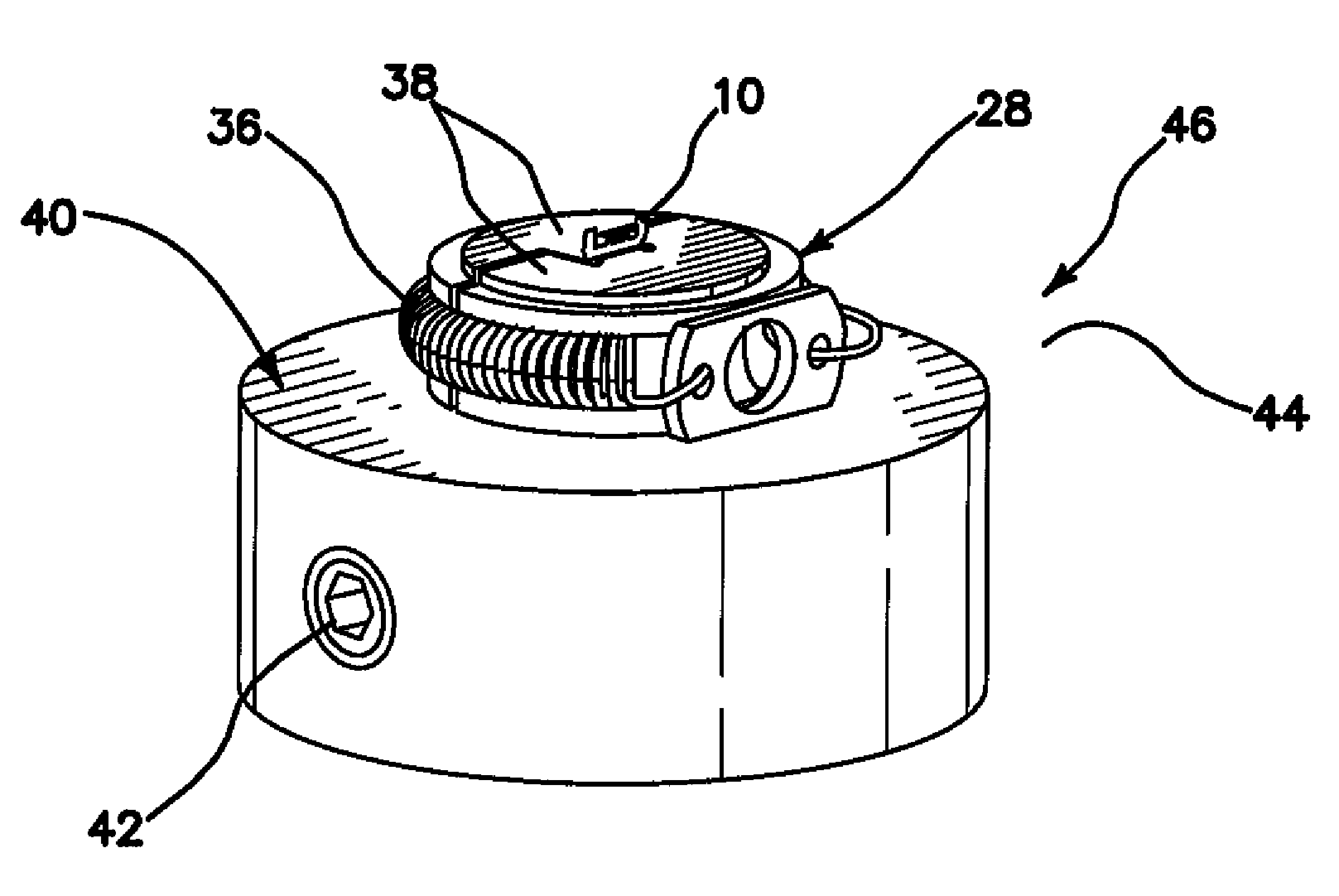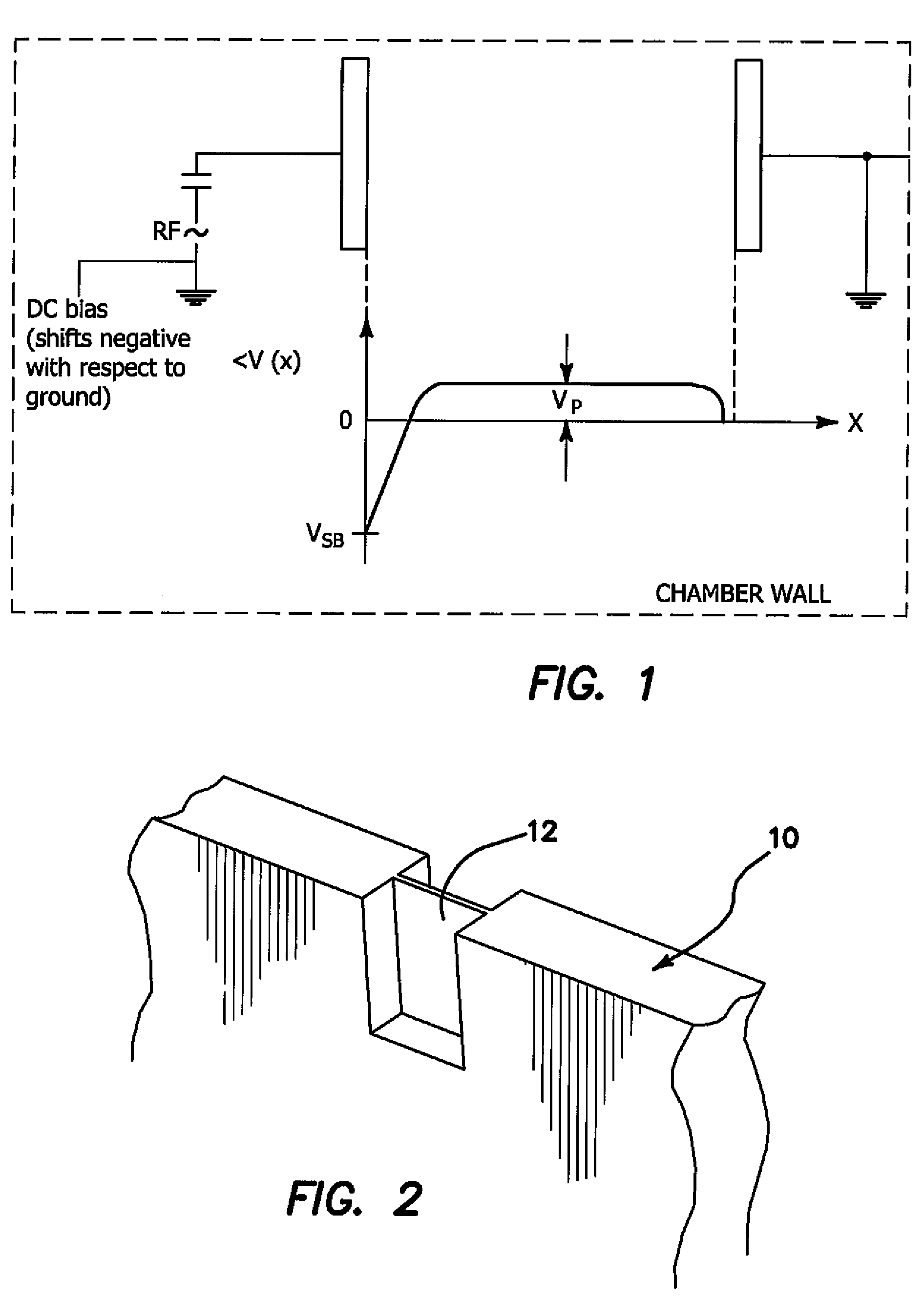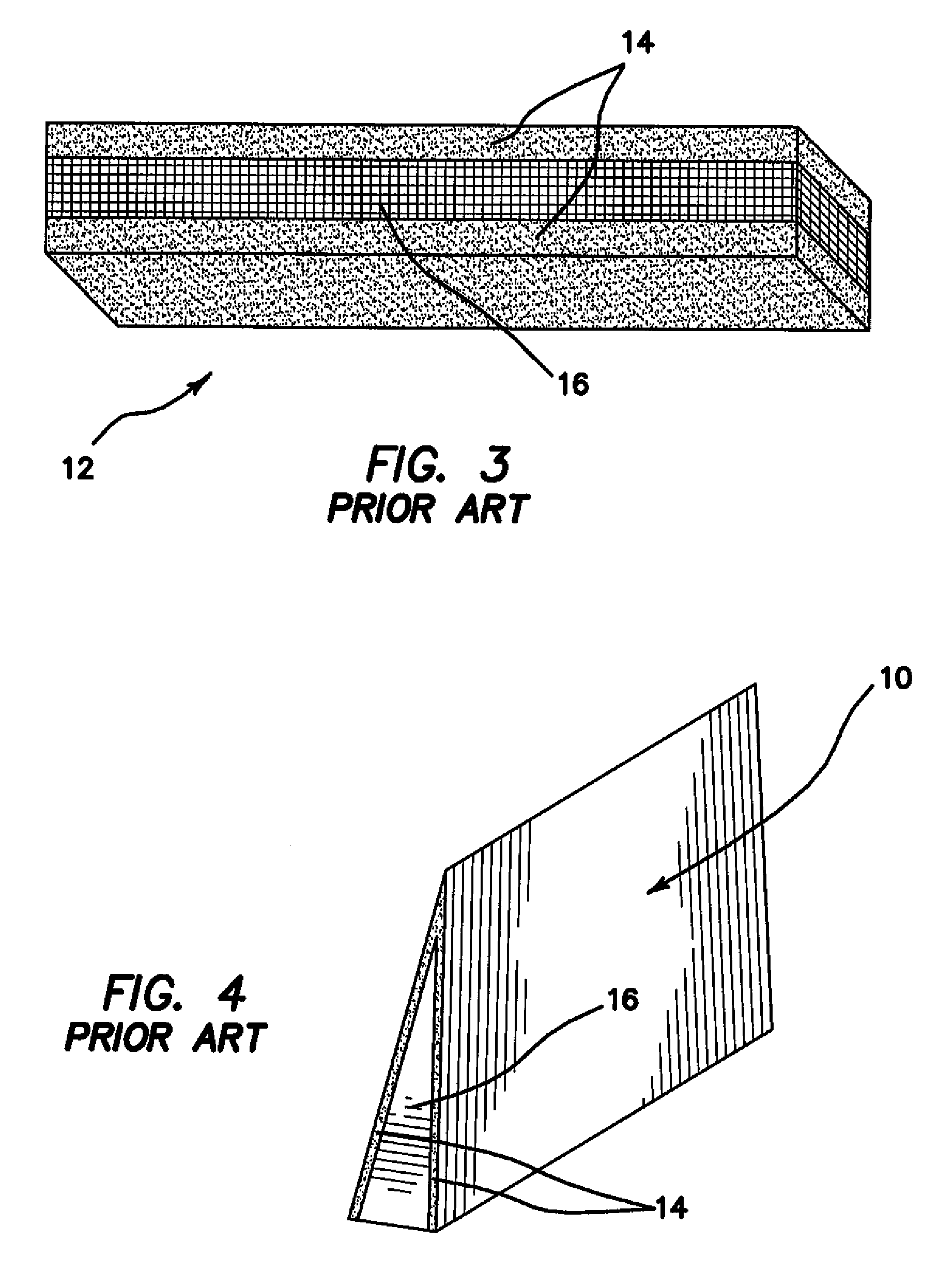Ion sputter removal from thin microscopy samples with ions extracted from an RF generated plasma
a plasma and plasma technology, applied in the field of assembly, can solve the problems of preventing the achievement of the desired resolution, reducing affecting the quality of high resolution images, so as to improve the sputter removal rate and minimize or eliminate the sputter deposition of materials
- Summary
- Abstract
- Description
- Claims
- Application Information
AI Technical Summary
Benefits of technology
Problems solved by technology
Method used
Image
Examples
Embodiment Construction
[0040]Referring now more particularly to the drawings, there is shown in FIG. 2 the geometry of a typical prior art “H-Bar” FIB prepared TEM material sample 10. A thin membrane 12 in the center portion of the sample 10 is electron transparent because its thickness typically varies between approximately 20 and 200 nm. This membrane 12 is the “H-Bar” cut membrane portion of the sample 10 which is used as the TEM sample. FIG. 3 illustrates a representative parallel-sided membrane 12, which has been cut with a FIB. Both sidewalls of the membrane 12, which comprise the top and bottom of the TEM sample as it appears in a microscope, can have a thickness of up to 23 nm of an amorphous thickness layer 14 below each surface. An undamaged portion 16 of the sample is the only region representative in the microscope of the original starting material.
[0041]Referring now to FIG. 4, there is shown a schematic representation of a tapered prior art TEM sample 10 that might be prepared by ion milling...
PUM
 Login to View More
Login to View More Abstract
Description
Claims
Application Information
 Login to View More
Login to View More - R&D
- Intellectual Property
- Life Sciences
- Materials
- Tech Scout
- Unparalleled Data Quality
- Higher Quality Content
- 60% Fewer Hallucinations
Browse by: Latest US Patents, China's latest patents, Technical Efficacy Thesaurus, Application Domain, Technology Topic, Popular Technical Reports.
© 2025 PatSnap. All rights reserved.Legal|Privacy policy|Modern Slavery Act Transparency Statement|Sitemap|About US| Contact US: help@patsnap.com



